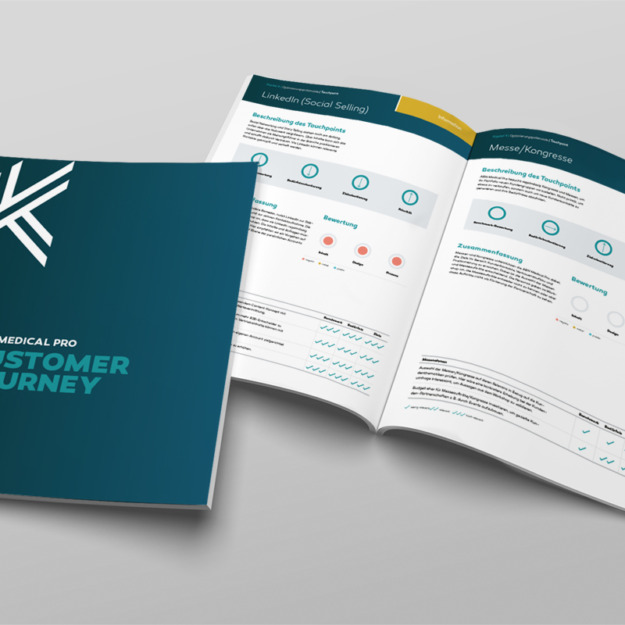Step 1: As-is analysis
At the beginning, the question is which contact points have a positive impact on the company’s success and where optimization measures are appropriate.
To trace the customer’s journey, we at Faktor K divide this journey into five phases. In the first phase, potential buyers get to know the company. At each stage, there are controllable and non-controllable touch points. Search engines, display advertising, and radio and TV are typical touchpoints in this awareness phase. After that, customers consider whether there is a deeper interest in the products and services and, in the second step, increasingly search for information. In the third step, the customer is basically convinced of a company and wants to deepen the knowledge about the providers. When buying, ease of contact and a straightforward process is key. After receiving the product, buyers engage with the product benefits in the loyalty phase.
The as-is analysis defines exactly which points of contact exist. At Faktor K, we use mystery shopping, customer surveys and data analysis to evaluate touchpoints. These are questioned and evaluated per persona. Not every touchpoint is equally important. Depending on customer needs, there are touch points that have high usage. Again, there are touchpoints that play a minor role in the overall buying process. The Customer Journey Map lists the touchpoints in each phase for each persona. Priorities are important, but so are factors that positively influence the user experience.
Step 2: Define target strategy
On the basis of the as-is analysis, a comparison is then made for each contact point. At Faktor K, we examine the customer’s needs, the company’s goals, and also whether usability factors have been considered at every point of contact. The comparison of the target and actual situation results in concrete measures. All of these ideas and activities to achieve the target state are incorporated into strategic planning.
Step 3: Implement strategy
Now it’s time for implementation. The overarching goals are broken down into concrete marketing measures. Often, work can be done in project teams or with agile methods that implement measures iteratively. Important: Involve your staff in all sub-steps. Partners such as agencies and consultancies can support with specialized know-how in the implementation of innovative digital points-of-contacts.
Step 4: Success control and optimization
Successful touchpoint management is measured with key figures. KPIs from online marketing provide valuable insights. The metrics provide insight into which touchpoints are customer-specific and revenue-generating. Adjust strategies regularly and rely on powerful touch points. The goals in touchpoint management are never fully achieved, as there are always new areas of the customer journey to design. Findings on optimization potential are incorporated into the future strategy.
Tips for successful implementation
A comprehensive database is the basis for successful touchpoint management. Key figures from marketing, customer service and sales are viewed holistically. Customer surveys are a valuable tool to get an accurate picture of the target group, their needs and benefit expectations. Interviews, focus group analysis, or observations provide qualitative access to individual customer experiences. Employees should be involved in all touchpoint management processes from the very beginning. In this way, knowledge, ideas and experience from all areas of the company flow in and at the same time a strong, internal involvement is created, which helps with the implementation.

Ready for good touchpoint management?
Get to know us without obligation and talk to us about your challenges. Get started.





